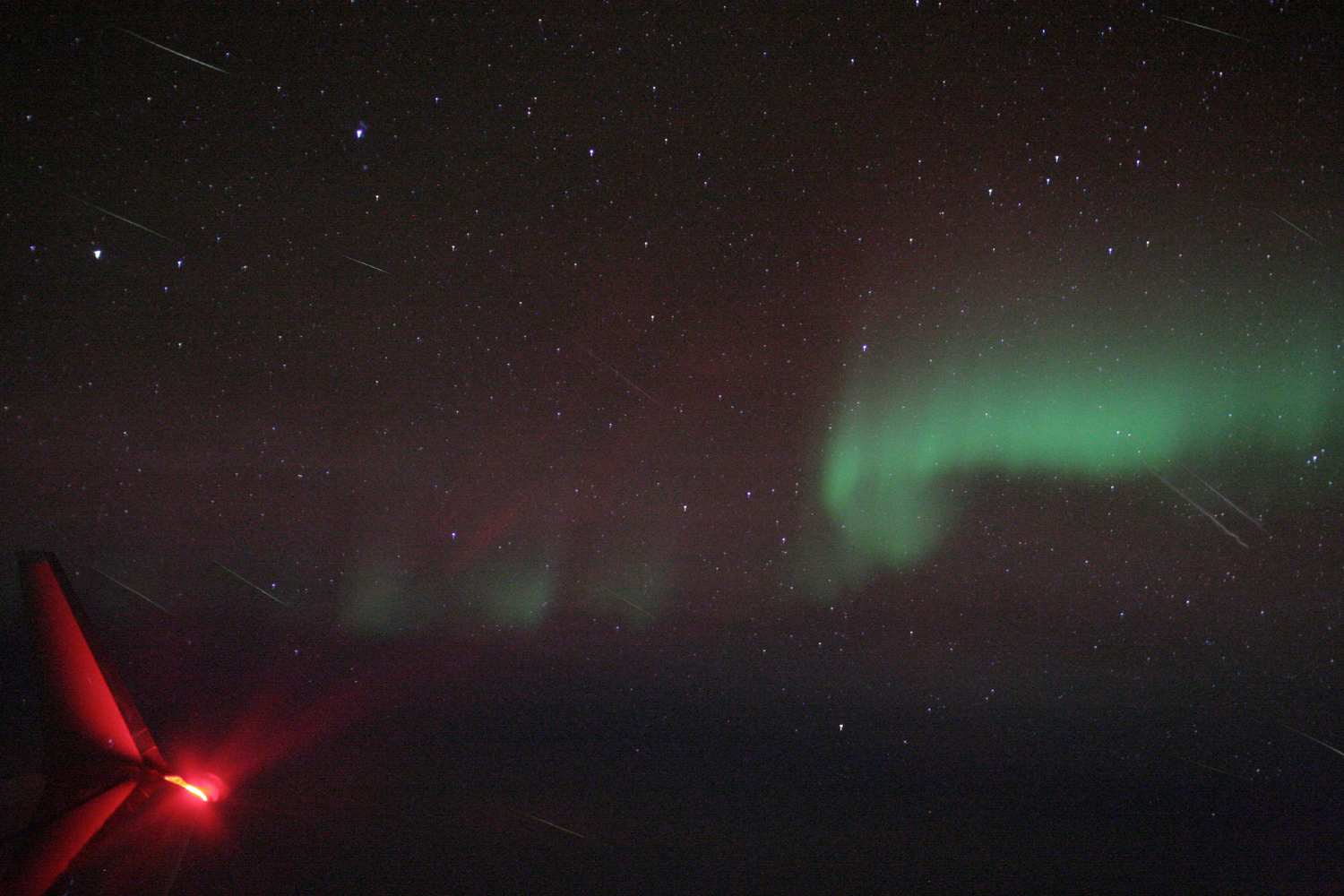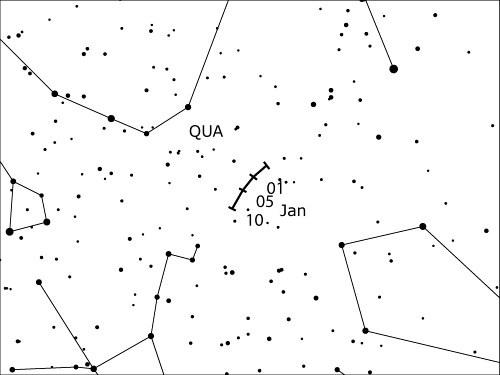
With the waxing crescent moon limited to the early evening skies, conditions will be nearly perfect for viewing the 2017 Quadrantid meteor shower. The peak is expected to occur near 14:00 Universal Time on the morning of January 3rd. This time favors the west coast of the continental United States, the west coast of Canada, and Alaska. 14:00 U.T. is equivalent to 6:00am Pacific Standard Time. This timing is too late for observers in the other three time zones of North America as the sun will either have risen or dawn will have arrived, obscuring any meteor activity. Even though observers located in the eastern ¾ of North America may miss the actual peak, rates of 25 to 50 per hour could still be observed under favorable weather conditions. As for other locations in Asia and Europe, a few Quadrantids can still be seen on the mornings of January 3rd and 4th. Due to the northern location of the radiant, these meteors are not well seen south of the equator.
The radiant for the Quadrantids lies in a sparse area of northern Bootes. The nearest bright star is second magnitude Alkaid (eta Ursae Majoris), which is the end star in the handle of the “Big Dipper”. This area of the sky lies lowest in the sky near 2000 local standard time. As the night progresses the radiant will swing higher into the northeastern sky and is best seen just before dawn.

The Quadrantids are active from December 28-January 10, but little activity is seen away from the morning of the 3rd. Due to the sharp peak of the Quadrantids, rates can also be quite poor as little as 6 hours on either side of the peak timing. This shower has the capability of producing the highest rates of the year for a brief few hours. To see such a display from this shower one must view under dark, transparent skies, with the radiant located high in the sky. In 20 odd opportunities to view this display, I have seen visual hourly rates surpass 100 once. All others were less than 50 and most of them were near 25 per hour at best. Weather is a major factor in viewing the Quadrantids. Cloudiness is often a problem and the cold temperatures can also be brutal on early January mornings. My advice is to bundle up and be comfortable or you will have trouble concentrating on observing.
The Quadrantid meteors are brighter than most with an occasional fireball. With an entry velocity of 42 km/sec., these meteors are of medium velocity. Persistent trains can be seen on the brightest meteors but at a lesser rate than meteors from faster showers such as the Perseids. Since Quadrantid meteors can be seen in any portion of the sky, face toward the darkest direction that is free of trees or other objects that may block your view of the sky. Don’t look straight up; rather look halfway up to see the most activity. Quadrantid meteors entering your field of view will all be parallel with similar velocities. They will all trace backward to the radiant in northern Bootes. Meteors from other sources will enter your field of view from different directions and will have varying velocities. On the morning of January 3rd, a great majority of the meteors seen will be Quadrantids. Meteors from other sources should total less than 10 per hour.
This is your last opportunity to view a major meteor shower until April when the Lyrids become active. So if your skies are clear on the mornings of January 3 and 4, take advantage of viewing this shower!




 You saw something bright and fast? Like a huge shooting star? Report it: it may be a fireball.
You saw something bright and fast? Like a huge shooting star? Report it: it may be a fireball.  You counted meteors last night? Share your results with us!
You counted meteors last night? Share your results with us!  You took a photo of a meteor or fireball? You have a screenshot of your cam? Share it with us!
You took a photo of a meteor or fireball? You have a screenshot of your cam? Share it with us!  You caught a meteor or fireball on video? Share your video with us!
You caught a meteor or fireball on video? Share your video with us!
One comment